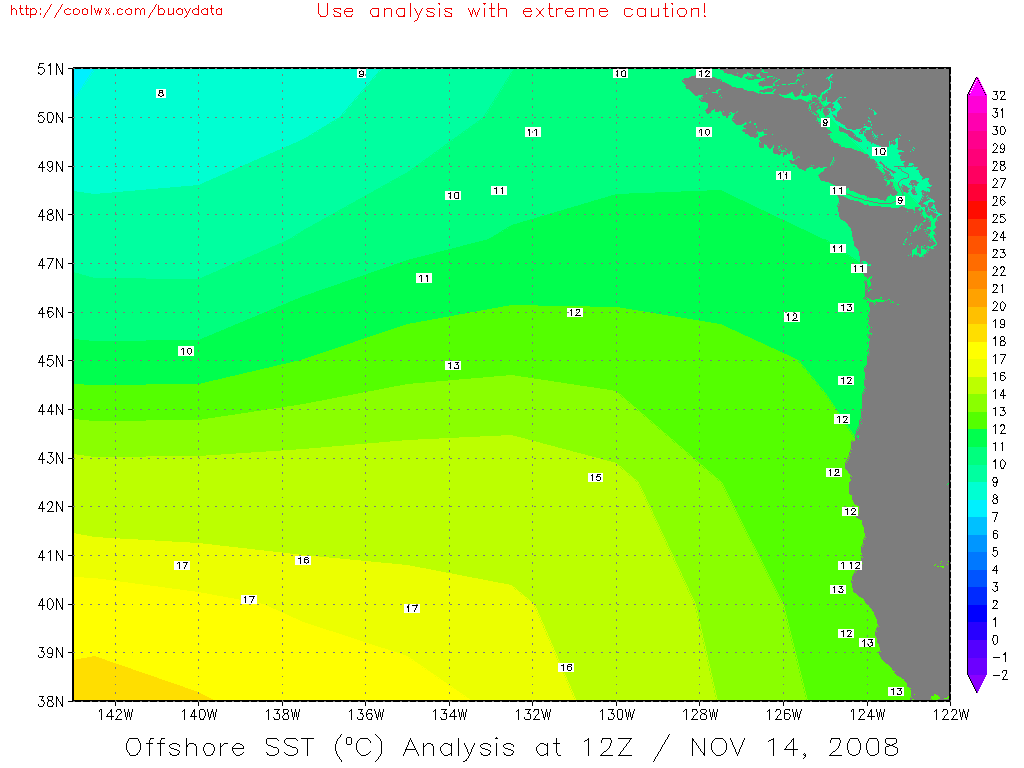
LESSONS LEARNED
An important lesson I learned is that I must modify my forecast to
account for local effects at a specific site. This is especially
true at Quillayute which lies only three miles from the Pacific Ocean.
The image below of sea surface temperatures shows 11 degree
C (52 F) water temperatures off the coast of Quillayute. Because
I didn't take into account the possibility of the front slowing down
from more closely examining the 700-mb image on the previous page, I
thought drier air would be moving into the area; however, as these METARS show,
the wind direction didn't change until after the 06Z November 13
deadline which delivered the cooler, drier air later than I expected.
With the wind bringing
in mild air off the Pacific Ocean waters, there was no change in the dew point, with it staying near 50 degrees. As you remember, the dew point was predicted by the SREF to fall to the mid 40's.

This is an image of sea surface temperatures from
November 14, 2008 that shows the water temperature off the coast of
Quillayute at 11 degrees C (52 F), courtesy of CoolWx.
Another look at these MOS tables continue to tell the story why the temperature
didn't drop the way I planned. Not only do they show the wind
still blowing out of the west at 06Z November 13, they show the
cloud ceilings would be quite low, as well. The GFS and NGM show the
ceilings down as low as 1,000 feet or less, while the ETA shows the
cloud ceilings much higher at 3,100 to 6,500 feet which helps explain
why its predicted temperature was lower. These METARS show
the actual cloud ceilings were only a couple thousand feet or less
most of the time on the evening of November 12. MOS typically
forecasts nighttime low
temperatures too cool when there's low cloud cover which is exactly
what
happened. This is another reason
why the temperature stayed in the 50's until after 06Z November 13.
So, there were a couple indications that should've told me to
forecast on the high side of MOS for that evening.
As you can imagine, Quillayute's proximity to the Pacific
Ocean has a huge impact on its weather and this is only one small
example. You can see, I'm still making mistakes as the WxChallenge
continues; however, the more mistakes I make, the more I'll continue to
learn from them and hopefully become a better weather forecaster.
1 2 3 4 5 6 7

